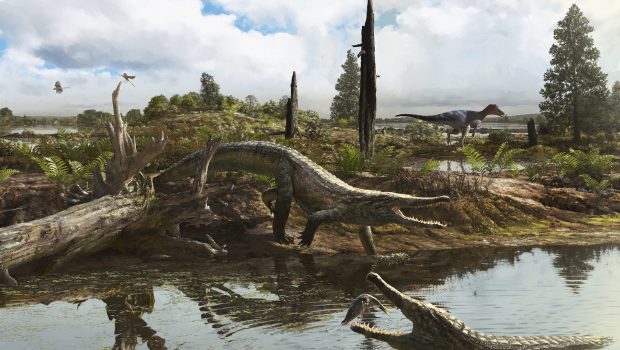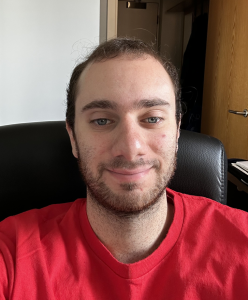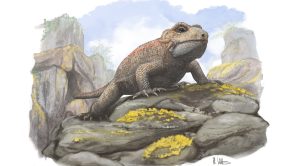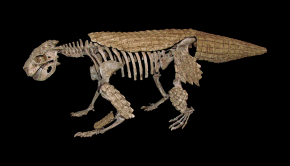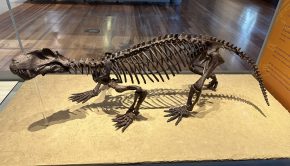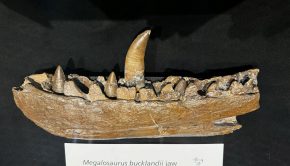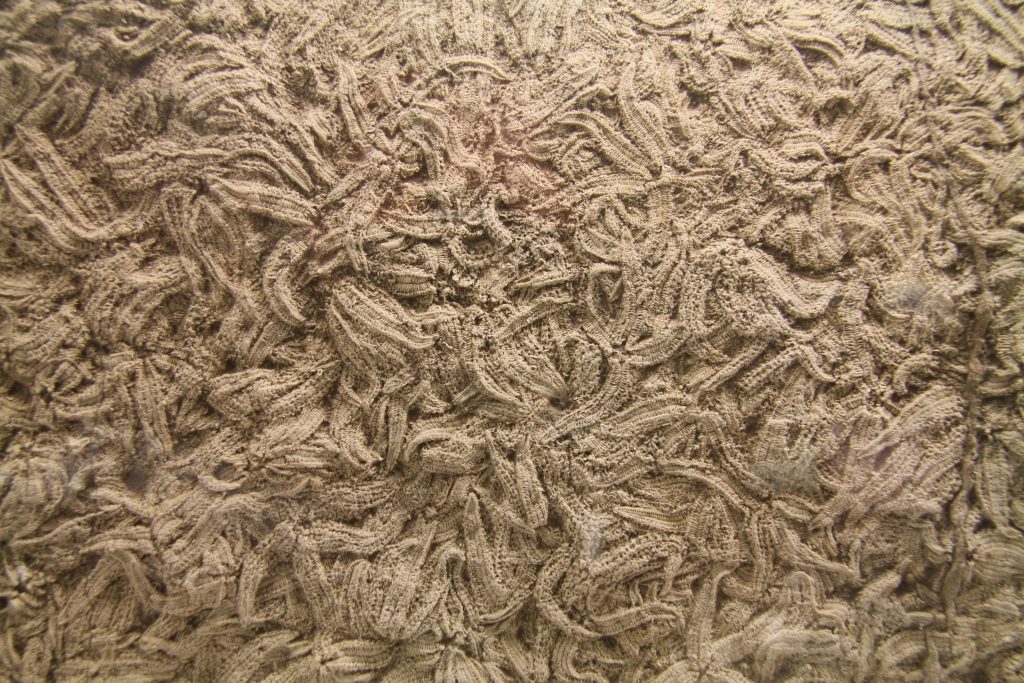A new species of notosuchian expands our understanding of stem-croc diversity: Epoidesuchus tavaresae
If I asked you to imagine a crocodilian you would no doubt conjure up a semi-aquatic ambush predator covered in scales, scutes, and with a long snout, lined with sharp teeth, capable of delivering bone-breaking bites. Most modern crocodilians fit this description, a testament to how conserved their anatomy and ecology is. This little diversity in body shape and lifestyle is not reflected in much of their fossil ancestors however, with many extinct forms having evolved bizarre combinations of adaptations not seen in any extant animals. The ancestry of crocodilians does not extend only a few million years into the past, but instead back to the Early Triassic over 240 million years ago when their lineage split off from that which went on to give rise to dinosaurs and birds. Many groups of crocodilian relatives would rise and fall across these 240+ million years, and among the most fascinating of them are the notosuchians, a new species of which has recently been discovered by a team led by Juan Ruiz and Marcos Queiroz of São Paulo State University: Epoidesuchus tavaresae.

Notosuchia was one of the most diverse and long-lasting clades of crocodilian ancestors. Restricted to the Southern Hemisphere, they originated in the Jurassic and lasted all the way up to the Miocene, surviving the cataclysmic K-Pg Mass extinction. The most eye-catching feature of notosuchians is that despite their great resemblance to modern crocodilians, they had erect limbs that held their bodies upright instead of sprawling, hence why they are often nicknamed ‘land-crocs’. Notosuchians were greatly diverse, with dozens of species known from extensive skeletal material. Among the most well-known notosuchians is Simosuchus clarki, which has recently garnered stardom from its appearance in Prehistoric Planet. As a small, herbivorous, pug-like animal covered in dermal armour, it is both hilarious and fascinating to picture it fending off a large predatory dinosaur like Majungasaurus. Another notosuchian, likely not too distantly related to Simosuchus, is Araripesuchus, which has also gained acclaim in recent years. However, this is not for a documentary appearance, but instead for the large number of species (5 are included in the phylogenetic analysis of Juan Ruiz and colleagues) within the genus. Several other notosuchians possibly fall into a subclade termed Baurusuchia. One of the more notable of the baurusuchians is Ogresuchus furatus, as its holotype was stolen soon after it was excavated (furatus is Latin for “to be stolen”). The namesake of the baursuchians, Baurusuchus itself, was terrifyingly large, likely weighing in at over 100 kg, and had teeth very similar to those of theropod dinosaurs. Some of the weirdest notosuchians are the sphagesaurians, which evolved heterodont dentition reminiscent of those of mammals. Many sphagesaurians, particularly Armadillosuchus, may have been capable of omnivory thanks to their bizarre teeth, in sharp contrast to the hyper-carnivorous Baurusuchus. The bizarreness of sphagesaurians is not limited to their teeth, as the aforementioned Armadillosuchus, as its name suggests, resembled an armadillo with a shield of dermal armour covering its body. The diversity of notosuchians was not restricted to these mentioned subclades and species though.
Renowned for its horn-like extensions flaring upwards from the back of its skull, and the gigantic teeth shooting out of the lower jaw and rising above the upper jaw, Kaprosuchus saharicus represents one of nature’s gnarliest looking animals. The intimidating ornamentation of this stem-croc might have deterred contemporary predators from competing with it for food. Interestingly, although this North African crocodilian ancestor belonged to the Notosuchia, which are well known for their terrestrial adaptations, Kaprosuchus and it’s close relative Mahajangasuchus probably specialised for a more semi-aquatic lifestyle. While every notosuchian mentioned so far is from the Mesozoic, the subclade Sebecidae persisted from the Cretaceous up until the Miocene. The sebecids of the Cenozoic were enormous apex predators that hunted the mammals which had largely taken over ecosystems from the dinosaurs. The namesake of the group, Sebecus, is named after the Ancient Egyptian god Sobek; a fitting name for the terrifying land-croc. Almost all sebecids are known from South America, indicating that they may have been mostly isolated to the continent, however, the recent discovery of the massive Dentaneosuchus from the Eocene of France upends this hypothesis. The final subgroup of notosuchians to be mentioned is the Peirosauridae, which the new species Epoidesuchus belongs to.
Epoidesuchus is from the Adamantina Formation of the Bauru Basin (where Baurusuchus gets its name) of Brazil, and this basin is unique for the high diversity and quantity of crocodylomorph material it has produced. There is no other place in the world that provides a window into an environment dominated by prehistoric crocs. Despite the incredible amount crocodylomorph material known from the Bauru Basin, the holotype of Epoidesuchus possesses a never-before-seen combination of anatomical traits, justifying the erection of a novel genus and species. The holotype of Epoidesuchus, which is the only material known for the taxon, is a fragmentary skull and an isolated neck rib. The knowledge gleamed from the anatomy of this material has clarified evolutionary relationships between peirosaurids. The phylogenetic analysis performed in this new study is the most up-to-date and exhaustive so far completed for peirosaurids, and finds that two divisions exist within the clade. One of which is the Pepsuchinae, which includes long-snouted forms that may have been semi-aquatic including Epoidesuchus. The other peirosaurid subgroup is the relatively tall snouted Peirosaurinae, who’s members were probably better adapted to a terrestrial lifestyle. While this new research untangles some interrelationships within Notosuchia, we are still far from reaching a robust understanding of the evolution of these stem-crocodylians.

Beyond the interrelationships of subclades of Notosuchia, there is still uncertainty surrounding how its major groups are related to each other, even the groups mentioned herein could be substantially reshuffled, unfortunately rendering the classification used in this blog post inaccurate. The study of notosuchians is gaining momentum, and it will only be a matter of time until we see new much research thoroughly investigating the palaeobiology of these fascinating crocodylomorphs and their place within their ecosystems. The ancient relatives of crocodilians are truly fascinating, proving to us there is so much wonder lost to deep-time, but also that palaeontologists have a lot more mysteries to solve.
To better understand what it’s like being an unraveller of notosuchian mysteries, I had the chance to interview Juan Ruiz of São Paulo State University about his research:
Q: How did you get interested in working on notosuchians?
A: I am a Brazilian guy, and if you are into vertebrate palaeontology in Brazil, it will take not much time before you meet notosuchians; in some geological formations, especially in São Paulo and Minas Gerais states, they are very, very common (yes, far more common than dinosaurs). To my luck (?), my supervisor, Felipe Montefeltro, is one of the leading notosuchian researchers, so I started working with these little guys on my master’s degree and couldn’t escape them anymore.
Q: What were some of the difficulties you faced when trying to identify the unique characteristics of Epoidesuchus?
A: I must admit that most of the brain work on the morphology of Epoidesuchus was conducted by a lab colleague and friend of mine, Marcos Queiroz; his master’s degree project was based on the description of Epoidesuchus. That said, most of the difficulties regarding identifying new materials of notosuchians from the Bauru Basin is uncovering if they belong to an already described taxon or if they are entirely novel; there are plenty of notosuchians in the Bauru Basin, so identifying diagnostic characters in many closely related taxa can be very tricky. Fortunately, Epoidesuchus has so many unique characters unseen in any other notosuchian (many of them related to the cranial roof) that allowed us to recognize it not only as a new species but as a new genus.
Q: What are some major gaps in our understanding of notosuchian evolution, and how do you think we can solve them?
A: Even considering that notosuchian studies date back to the 18th century, most of its research was historically based on the systematics and taxonomic fields; we are only starting to investigate them by using up-to-date imagining techniques, such as CT scans, and quantitative methods such as geometric morphometrics and finite element analyses, approaches that results in solid data that allow us to infer with more certainty about its biology and evolutionary history. But there is still a lot to be studied.
And to be fair, Notosuchia is a very interesting lineage to study, with many gaps in our knowledge of its general biology. They have unusual distribution patterns, ghost lineages that difficult our understand of their macroevolutionary history, extreme morphological features, and peculiar habitat specializations, to cite a few points. Also, in many communities dominated by dinosaurs, there are few notosuchians; in places where dinosaurs are uncommon, these crocs flourished. Why? Notosuchians are a never-ending source of questions to palaeontologists.
Q: What are some important skills students should learn to be able to do research similar to yours?
A: Our study group is very multidisciplinary; we have the FEA guy, the statistics genius, that living being who knows every detail on the taxonomical history of clade X, and so on. But everyone must know the basics of fossil comparative description: the interpretation of the anatomical features and a knowledge of the systematics of the clade. To that, we need to read, read, spend hours analysing the fossil remains, and after that, read a little bit more. With this baggage, we’ll have what is needed to make the right questions to lead to the hypothesis(es) we’ll test. This, of course, this is just my opinion.
Q: What’s your favorite notosuchian? Is it Epoidesuchus?
A: This is a difficult question; notosuchians are so diverse that it is almost like asking, “What is your favourite dinosaur?”. As I described a species in my master’s degree, the obvious answer is Caipirasuchus attenboroughi (yes, named after that dude we all love). Apart from its specialized mouth, the humble Caipirasuchus is not the most special of notosuchians: small, terrestrial, putatively omnivorous, just like your average tegu lizard. But tegus are lovely creatures, aren’t they?
Hady George is a palaeontology PhD student at the University of Bristol researching the jaws of the earliest tetrapods among other things, and seemingly always has a pop science book somewhere in his bag.
Cover image: Artwork depicting the newly described peirosaurid notsuchian Epoidesuchus tavaresae (center) alongside contemporary animals and vegetation known from the Bauru Basin. Artwork by Guilherme Gehr and permission to be used here by Juan V. Ruiz.

